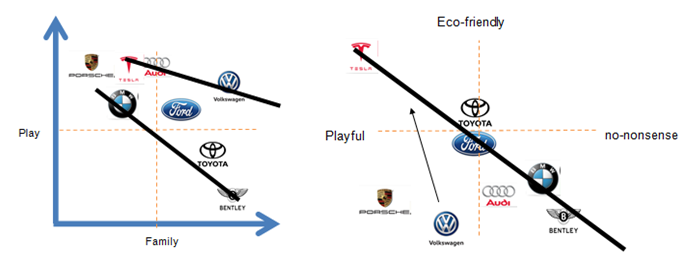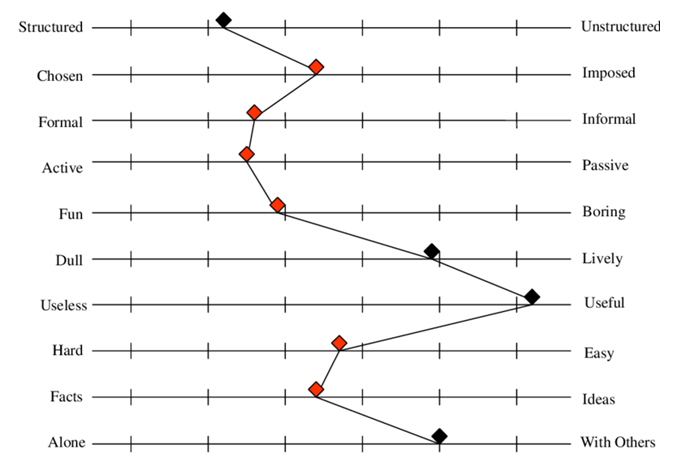Have you ever thought how people perceive your brand? Its always beneficial to map out where your brand sits in the market against your competitors.
What is brand positioning? Brand positioning is mapping out the conceptual perceived image in which your brand sits among other brands in the market, ensuring that your communication is distinct and specifically targeted in the minds of consumers. This comprises the advantages and way of life that people consider when they look at and interact with your company.
In this article, I will take you through some of the aspect that I find are important when trying to position your brand.
1. What Is Brand Positioning?
The primary message that determines who you are as a company and what you stand for is evaluated in your brand positioning strategy. It includes evaluating your trademark, promise, and the type of relationship you want to develop with your customers.
But, more crucially, your brand’s position is defined by what your customers believe it to be. If you try to position your brand to mean something and the buyer doesn’t have a positive association then the brand may work against your business.
2. Why Is Brand Positioning Important?
Brand positioning is important as it helps align the brand image to the customers values and desires. This makes you more persuasive as a business and provides you with direction to close more sales.
Effect brand positioning will boost a firms visibility over the competing landscape. This increasing your chances on brand recall and recognition in the eyes of the consumer.
3. Brand Image Factors
When talking about brand positioning we are actually talking about how we want to communicate the brand image. This includes key messages that highlight your products attraction, simplicity of use, functionality, and overall value of a product. This is because when the buyers purchase the product, they are also purchasing it’s image.
I like to use the attractive character model as it highlights all the things that make your business appear more human and brings it to life. All these factors go into forming your brand image. A good brand tells a story, outlined in a tool called the attractive character.
Attractive Character Model
4. Three Types Of Positioning in a Business
There are three types of positing in a business are strategic, brand and products positioning.
- Strategic positioning – this is the strategic part of the business ideal position in the market against the competitors position against what people are looking for in your products.
- Brand positioning – this is the tactical part of the business within the messaging. What story we tell our consumers, the identity we have the brand image we own and personality we possess to reflect our strategic position in the market.
- Products positioning – these are the benefits we offer to our customers also reflected in the product messaging which reflect the customers wants and needs with that product.
Below, we discuss some of the tools that can be used to evaluate brand positioning. You may find these tools are transferable as you can use them when strategic positioning and product positioning.
5. Positioning Statement
When we form our brand position, we need information collected from the strategic positioning. The positioning statement highlights everything you need to know to position your brand.
It is essential to have a positioning statement as it ensures the brand position is focused as possible to the target audience, it has the essentials to be industry standard and is unique enough if gives a person a reason to purchase from you.
A positioning statement has three essential parts:
Constructs Of A Positioning Statement
- Target segment – It has a very clear target segment even if it is not just that person who uses it. This is what do they want.
- Point of difference – what makes your brand different in the market that other companies. The point of difference makes you unique but also an expert where other businesses will find it hard to replicate. This means it must be defensible, whereby you have the resources to deliver but other companies may not.
- Frame of reference – also known as point of parity, these are the things that are required which are shared with other brands.
Example of a Brand Positioning Statement
6. Bipolar Scales Of Brand Positioning
Whenever a positioning exercise takes place, there are measures that take into account the targets customers wants and needs. This can be quite hard to do, as you need to have conducted market research to understand the measures attributes.
The market research exercise is simply getting feedback from your target customer and forming a persona of whom your brand message will target. Therefore, you have to go out and speak to your audience and understand who they are.
Once you have known what is important to your customer you can lay down attributes on a perception map as seen .
7. Perception Map
A perceptual map is a chart that market researchers and businesses use to show and understand how target customers perceive and feel about a brand or product. Product positioning maps are another name for perceptual maps.
From the perception map, you will form primary attributes and secondary attributes, which will be incorporated into the brand image, brand personality and brand identity when forming your brand.
8. Evaluating Brand Position
It’s generally helpful to have a visual depiction plotting your data once you’ve received all of your market research feedback so that it can be discussed simply among your team. A basic line graph and measurements that you feel useful in defining an accurate brand position are an excellent approach to do this. Positioning requires aligning within the trend of the industry else an organisation could be left behind. Making it essential to use measures that are trending in today’s society.
Consumers always have 1 reason to buy and 1 reason not to buy so this is always a good starting point to take into consideration when evaluating your ideal position in the market.

To note: The above data is my perception only. As discussed a brands identity is how customers perceive it. It would be required to get this data from customers and the public to get a most accurate depiction by conducting additional market research.
Before Volkswagen took the hit from the scandal it was rated high in the codes of ethics, accordingly, the re-positioning will restore its ethical profile. In order to win this segment, they need to be perceived slightly more playful and extremely eco-friendly. As you can see in this example Volkswagen is in need of re-positioning to fit the trend. After conducting quick research, I found that average market age is 25-39 which have common factors of playful and exploration according to the golden age of youth study. I choose eco-friendly axis as a main measure because there is a massive trending demand to more affordable eco-friendly vehicles, which would be by miles per gallon over emissions released.
Conclusion
Because your company is in the market, the brand position dictates the messaging. However, you need to go through the process of gathering market research. The market research is used to compile the data for the perception map, which is then used to create a positioning statement.
The ideal character model can then be used to construct our brand messaging. This includes forming our brand identity, personality, and image as they will all be influenced by this the strategic brand position.









